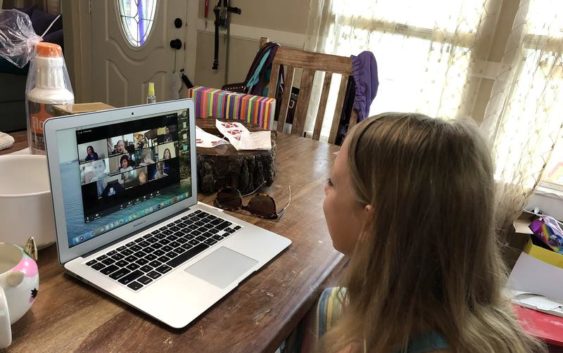- Seven months after Hurricane Helene, Chimney Rock rebuilds with resilience
- Wildfire in New Jersey Pine Barrens expected to grow before it’s contained, officials say
- Storm damage forces recovery efforts in Lancaster, Chester counties
- Evacuation orders lifted as fast-moving New Jersey wildfire burns
- Heartbreak for NC resident as wildfire reduces lifetime home to ashes
Unprecedented Push To Educate Remotely Means Big Ask Of School Technology In Texas And Beyond

When Gov. Greg Abbott closed schools on March 19 to slow the spread of COVID-19, he kicked off an unprecedented push to educate students remotely in Texas.
Kenneth Thompson has been running nonstop for weeks, and he is tired.
The Chief Information Technology officer for the San Antonio Independent School District is trying to put a device in each students’ hands — 4th through 12th grade.
“We’re doing in three weeks what we have planned to do in five years,” Thompson said.
It hasn’t been easy. But he says they’ve made progress. The district released 17,000 laptops to students immediately and has started scrounging for more.
Companies like Dell and Lenovo are so inundated with school requests from across the country they can only offer delivery in May and beyond, said Thompson.
“Everybody is pulling off the same shelf, if you will,” he said.
But with some luck, one of his staff members found a local reseller with 30,000 Chromebooks.
He bought them all.
As teachers and students in the district adapt to a new world filled with video conference calls and online learning, his team has to build the infrastructure to make it work.
They’ve issued more than 5,000 mobile hotspots to help bridge the digital divide this school year. They have played with sending wifi-equipped school buses into neighborhoods lacking connections. And then there’s the troubleshooting.
“We went from a four-person help desk to a 15-person help desk in a matter of four days,” said Thompson. “My call volume has jumped from 150 calls a day. I think today at around three o’clock we had 900 calls.”
But so far it’s going well: They are getting around 15,000 hits on their educational resource website.
Thompson said he chats with other city school district CIOs every night and the mood is — like his — weary.
The efforts of SAISD and districts like it are unlike any in recent history.
“I’ve been doing this work for about 43 years now. And I really cannot think of anything comparable,” said Michael Casserly, executive director of the Council of Great City Schools, which helps large urban school districts.
He says the experiences of districts across the country have not been universal. A district like a Miami — which deals with mass disasters like hurricanes — might have a warehouse filled with devices they can deploy on a whim. Others like SAISD have to sniff out the devices.
Some districts have stuck with analog solutions like printed homework and lesson plans.
While online learning is more present and engaging for students and teachers, he said it doesn’t have a lot of research behind its efficacy.
“There are bound to be learning gaps here. And those learning gaps are likely to be widest in places with the greatest amount of need, which is unfortunate,” said Casserly.
The road ahead is not without gaps or snags or potential failures. But Casserly said the situation is new, and people are working hard across the country to ensure students get back to where they should be.
Paul Flahive can be reached at Paul@tpr.org and on Twitter at @paulflahive.